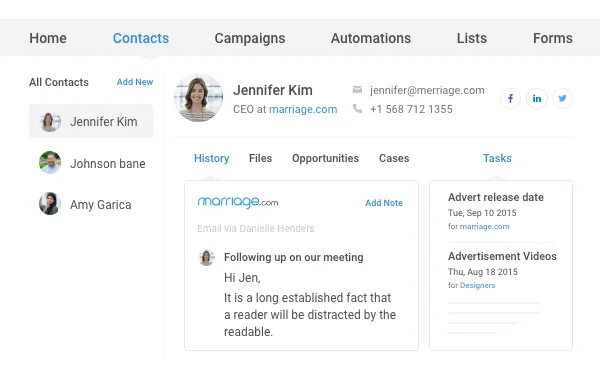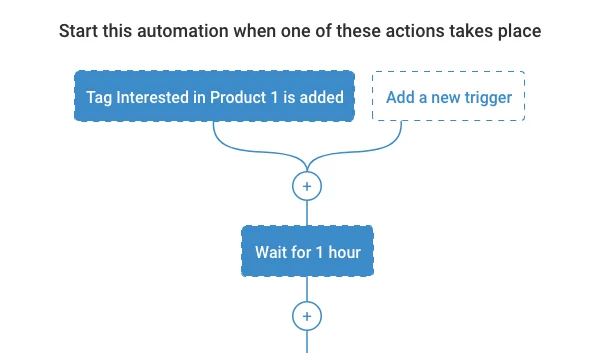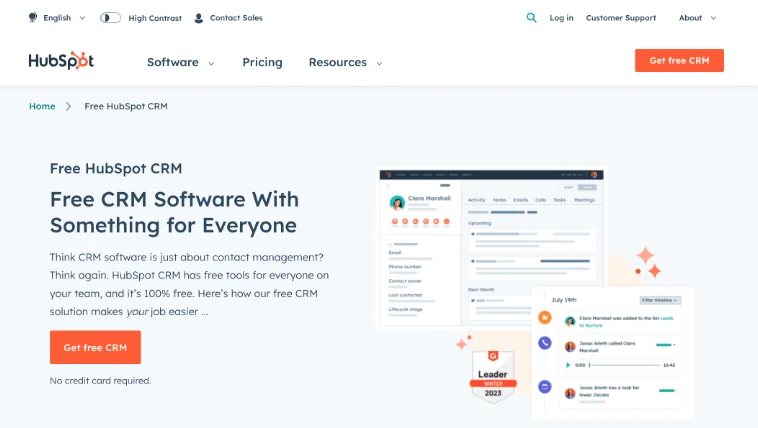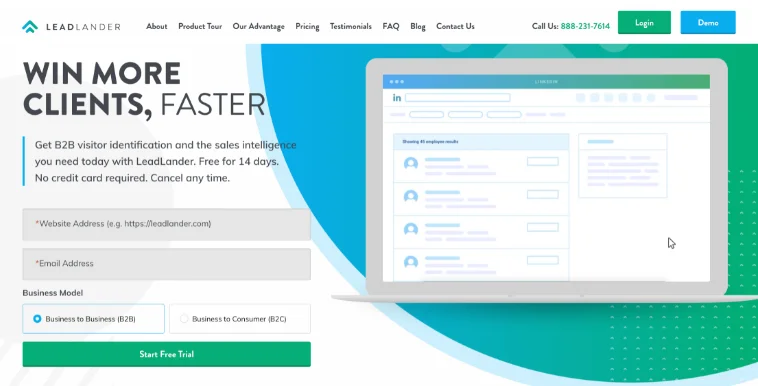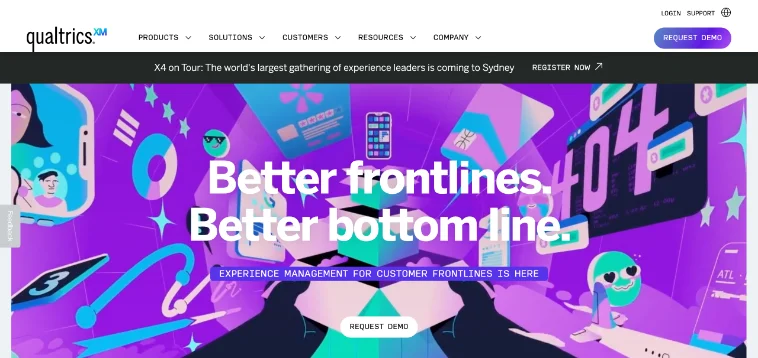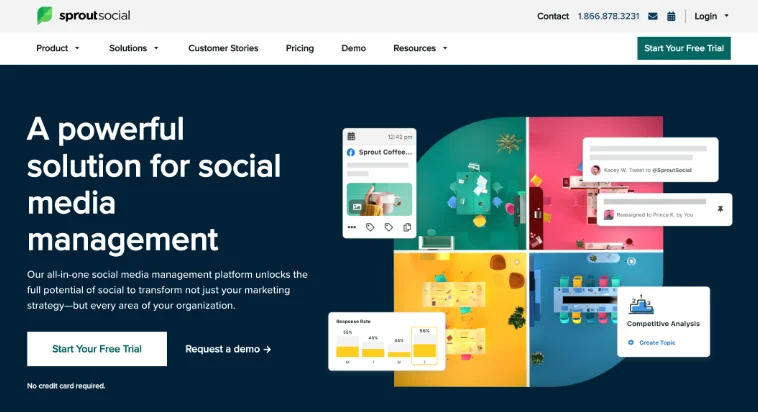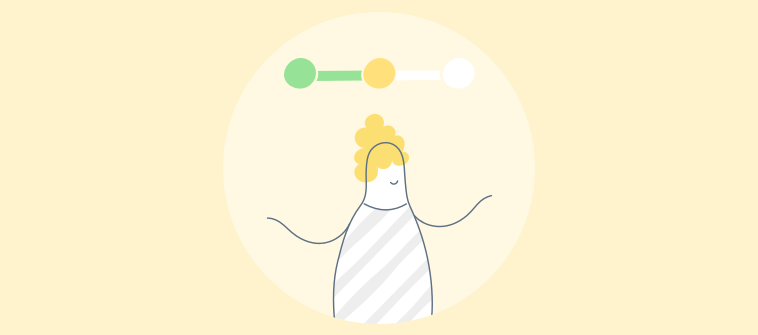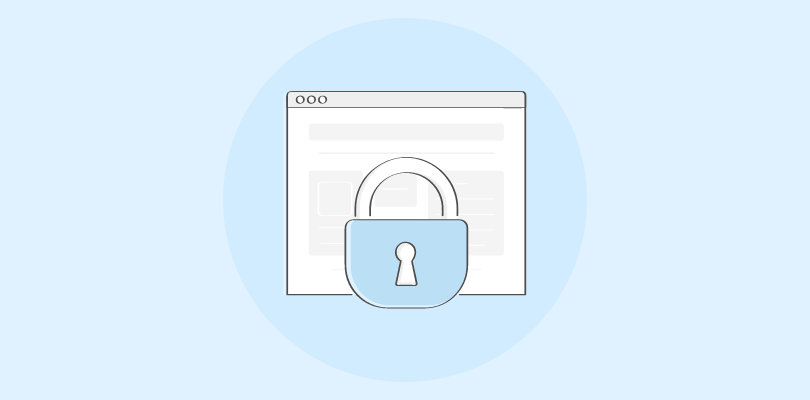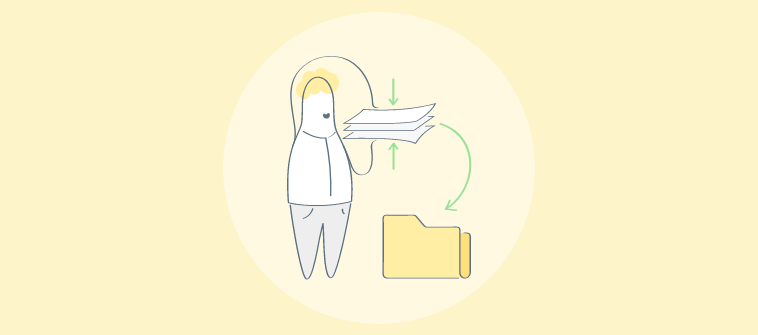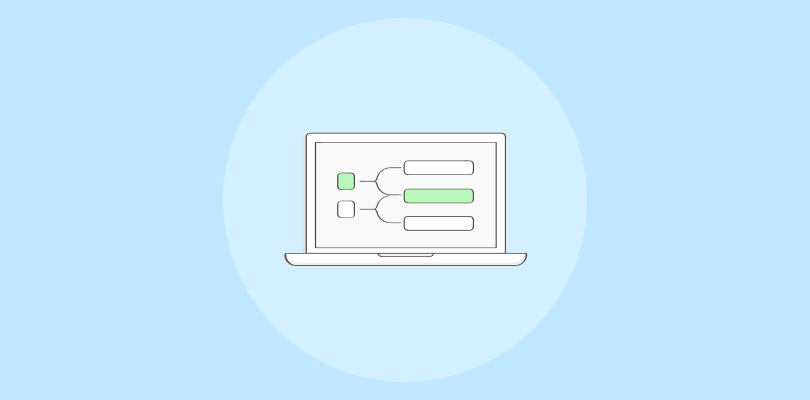Dividing your customers into arbitrary categories should never be mistaken for an effective segmentation approach.
With so much noise in the market, it’s time to move on to a more all-rounded system to segment your customer base. Since it can be challenging to know what your customers want, how they behave, and what motivates them to buy, you need customer segmentation analysis.
You need to understand your target market, identify the most valuable customers, and discern the traits you’ll use to segment your customers. Once you have these categories, you must compare them against your business objectives to analyze their effectiveness. This will help you develop targeted marketing strategies resonating with each group.
We’ve put together this comprehensive guide on customer segmentation analysis to make this entire process a plain sailing for your business.
What is Customer Segmentation & Analysis?
Customer segmentation involves the division of the customer base into smaller groups sharing similar characteristics. Segmentation aims to tailor the products, services, and marketing strategies to specific groups of customers, rather than treating all customers the same.
Analyzing customer segments can be profitable because it helps understand customers and their needs. By segmenting customers based on characteristics such as age, gender, income, and location, you can develop highly targeted solutions, resulting in improved satisfaction.
According to Campaign Monitor, segmented campaigns lead to a 760% boost in revenue.
Customer segmentation analysis helps drive sales and build customer loyalty. Catering to specific groups of customers increases the likelihood of your success in today’s competitive marketplace.
How To Create A Customer Segmentation Strategy?
Customer segmentation has to be an ongoing practice.
The goal of customer segmentation is to develop targeted marketing messages and tailor products and services to the needs of each segment, resulting in increased customer satisfaction, loyalty, and revenue. For this, you require a well-thought-out strategy that takes into account your business needs and growth plan.
To create your segmentation strategy, you must:
- Define objectives: What do you want to achieve through segmentation? For example, is it to increase sales, improve customer satisfaction, or reduce costs?
- Collect data: Create relevant customer database and store it in a customer database software, such as demographics, purchasing behavior, and preferences.
- Identify segments: Analyze the data to identify meaningful segments. Use statistical methods such as clustering or factor analysis to group customers with similar characteristics.
- Develop profiles: Create profiles for each segment based on the data collected, including key characteristics and behaviors.
- Determine marketing strategies: Develop targeted marketing messages and tailored products and services for each segment.
- Implement and evaluate: Implement the marketing strategies and monitor their effectiveness. Refine the segmentation strategy based on customer feedback and results.
Let’s understand customer segmentation strategy better with IBM as an example.
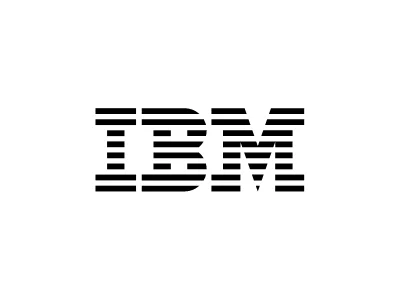
IBM uses a mix of demographic, geographic, and behavioral segmentation. IBM’s segmentation strategy focuses on industry verticals, such as healthcare, finance, and retail. Each segment has unique needs, challenges, and opportunities, and IBM has developed customized solutions for each segment.
For example, in the healthcare industry, IBM offers solutions for population health management, personalized medicine, and clinical trial management. In the finance industry, IBM provides solutions for risk management, fraud prevention, and regulatory compliance.
By tailoring its products and services to each segment, IBM has been able to increase customer satisfaction and revenue.
Customer Segmentation Strategies
Customer segmentation can be based on various attributes. This could include-
- Who they are
- What they do
- How much value do they carry for your business
- What they are looking for
- How did they find you
Segmentation can be classified into the following categories:
Demographic Segmentation:
This segmentation is based on age, gender, income, education, occupation, marital status, etc. Demographic segmentation is useful for businesses that sell products or services targeted to a particular demographic group.
Geographic Segmentation:
This segmentation is based on customers’ location, such as country, region, city, or neighborhood. Geographic segmentation is useful for businesses that want to create marketing campaigns that target specific regions or markets.
Psychographic Segmentation:
This segmentation is based on customers’ lifestyles, values, interests, and personalities. Psychographic segmentation is useful for businesses that want to create marketing campaigns that target specific customer attitudes or behaviors.
Behavioral Segmentation:
This segmentation is based on customers’ purchasing behavior, usage patterns, and brand loyalty. Behavioral segmentation is useful for businesses that want to tailor their products or services to customer preferences.
Firmographic Segmentation:
This segmentation is based on the characteristics of a business, such as industry, size, revenue, and the number of employees. Firmographic segmentation is useful for B2B businesses that sell products or services to other businesses.
Benefit Segmentation:
This customer segmentation example is based on the benefits that customers seek from a product or service. Benefit segmentation is useful for businesses that want to create marketing campaigns highlighting the benefits of their products or services.
Occasion Segmentation:
This segmentation is based on the occasions or events when customers are most likely to use a product or service. Occasion segmentation is useful for businesses that want to create marketing campaigns that target specific events or occasions, such as holidays or birthdays.
Each segmentation methodology provides a different perspective on customer behavior and preferences. By using these methods, you can create targeted campaigns that effectively reach and engage the target audience.
5 Top Benefits Of Customer Segmentation Analysis
Before you begin with customer segmentation analysis, you must realize its significance for your business. While many organizations segment their customers, a lot of them fail to analyze these segments efficiently. Consequently, they are not able to make the most of their segmentation efforts.
The following are the most important benefits that customer segmentation analysis offers-
1. Identify High-Value & At-Risk Customers
Segmenting customers helps identify which customers are the most valuable and which ones are at risk of leaving so you can take targeted actions.
2. Optimize Business Offerings
Putting your customer segments to good use will help you enhance your services, resulting in better customer satisfaction and retention.
3. Better Resource Allocation
By understanding which customer segments are most valuable, you can allocate resources more effectively. This will result in better usage of marketing and sales resources and improved ROI.
4. Improve Future Decisions
A thorough analysis of customer segments will help you identify what is working well, allowing you to optimize your upcoming segmentation plan.
5. Plan for Each Segment
A well-founded analysis of customer segments can help you create exceptional and highly personalized customer experiences, resulting in improved customer loyalty.
Steps Of Customer Segmentation Analysis
Once you create your customer segments, you need to analyze them to determine if they are producing the desired outcomes. Customer segmentation analysis entails the following steps-
1. Assess Segments
An in-depth understanding of your ideal customer profile will help you review the customer segments efficiently. Find loyal customers and discern their traits. Also, ensure that the data you use for creating your segments is up-to-date and accurate.
2. Analyze Against Goals
Next, you need to ensure that the segments are producing the expected results. For this, you need to compare your performance against business goals. Track relevant KPIs and identify areas for improvement in your segmentation efforts using in-depth reports and advanced analytics.
3. Seek Feedback
Gain valuable insights from customers and employees to enhance your segmentation strategy further. You can conduct surveys, use social listening, deliver forms, or use other feedback collection methods to analyze the effectiveness of your customer segments.
4. Implement Changes
Lastly, you must put all the collected data to good use. Address the gathered feedback and make appropriate changes to your segmentation approach.
What Does A Customer Segmentation Tool Do?
The function of good software is to make the complex appear to be simple. https://t.co/EiaZ9tr0FQ
— Grady Booch (@Grady_Booch) August 31, 2018
This holds true for customer segmentation tools as well. Such tools help collect, store, and manage customer data so you can categorize them effectively.
There are several aspects of customer segmentation that a powerful tool can facilitate. Some of these are listed below.
Centralized Data:
Use a contact segmentation tool to store all the essential information in one place and leverage it for creating effective segments. This comprehensive data repository makes it easy to access updated client details without any back and forth.
Tagging & Filtering:
Tag your contacts and segment them into groups or lists based on any attribute. You can use advanced filters to categorize the customers in your database instantly.
Automated Workflows:
You can use the automation capabilities of the software to create lists that are updated automatically. This saves you from having to manually update lists based on changing client information.
Performance Tracking:
The reporting and analytics capabilities of such a tool will enable you to track the effectiveness of your segmentation efforts. Monitor the most relevant metrics, discover trends, and identify areas of improvement in your segmentation strategy.
5 Best Customer Segmentation Software
Now that you are aware of what customer segmentation software can accomplish check out a detailed comparison of the 5 best customer segmentation tools that you can use.
1. BIGContacts
BIGContacts is a power-packed CRM solution that helps you manage your customer base efficiently. Use it to filter contacts and create well-segmented lists based on any criteria of your liking. Furthermore, you can create automated tasks and workflows to keep these lists well-engaged with highly personalized interactions.
Key Features:
- Improve sorting and filtering using contact tags
- Create dynamic and static customer lists for segmentation
- Generate detailed reports to monitor the effectiveness of your customer interactions
- Craft automated and targeted email sequences for segmented lists
- Enhance segmentation efforts with powerful integrations such as Gmail, Outlook, Mailchimp, QuickBooks, Shopify, Google Contacts, etc.
Pricing:
- Forever free plan for startups with 100 contacts. Paid starts at $9.99/month with a 15-day free trial.
2. HubSpot
HubSpot CRM enhances marketing efficiency by aiding contact management and data segmentation. Use it to create well-organized customer lists to deliver more targeted marketing campaigns. You can perform the segmentation based on various characteristics and create hyper-targeted email campaigns for these lists with HubSpot.
Key Features:
- Create targeted lists of customers to drive more personalized interactions
- Modify your marketing campaigns with behavioral targeting
- Lists are automatically updated based on changing contact information, saving you the manual effort
- Craft personalized and automated email campaigns for your lists to improve marketing ROI
- Use time-based lists to deliver your message at the right time
Pricing:
- Free plan available with limited functionality
- Paid plans start from $18/month
3. LeadLander
LeadLander is an effective prospecting tool that can be leveraged for segmentation. Use it to gather useful details about website visitors and create efficient lists based on this information. The tool allows you to increase your conversions by capturing quality leads and providing valuable insights into high-priority prospects.
Key Features:
- Collect specific details about your website visitors
- Create custom dashboards to track the most relevant information about prospects
- Receive real-time alerts to keep your lists well-updated
- Get automated reports for improving your business performance
Pricing:
- Available on request
4. Qualtrics
Qualtrics helps you identify high-value customer segments. You can also use it to optimize your engagement efforts by creating highly targeted lists of customers. It makes it easier to understand your target audience and deliver tailored services. The tool also offers advanced analytics so you can track the effectiveness of your segmentation efforts.
Key Features:
- Create segmented groups and analyze results from the same platform
- Identify the most valuable market segments and focus on them
- Engage with segments using the most appropriate channels, including email, website, calls, etc.
- Use predictive intelligence to uncover trends and patterns in customer data
- Automate engagement sequences to connect with customers at the right time
Pricing:
- Available on request
5. Sprout Social
If you want to leverage social listening for customer segmentation, Sprout Social is the one to go for. This social media management platform enables you to understand your customers better and deliver more relevant solutions based on their needs and preferences. Use custom reports and advanced analytics to monitor the impact of your segmentation efforts.
Key Features:
- Use social listening to gather data and segment customers
- Filter through collect data effortlessly
- Advanced analytics enable you to make informed decisions
- Track data and optimize your social media campaigns in real-time
- Use sentiment research and trend identification for improved segmentation
Pricing:
- Starts from $249/month
Segmentation- Your Ticket to Exponential Business Growth
Customer segmentation analysis is essential for understanding customers and improving marketing efforts. It will help you ensure that your marketing messages and positioning are resulting in increased customer satisfaction and revenue.
In today’s competitive market, businesses that invest in customer segmentation models using the right tools stand to gain an advantage over their competitors. By leveraging the insights from segmentation analysis, you can create personalized experiences and build lasting relationships that drive growth and success.
Whether you’re a small business owner or a marketing professional, investing in customer segmentation analysis using tools like BIGContacts can be a game-changer for your business. With its robust features, such as customizable fields, tagging, and segmentation options, you can easily segment customers based on a wide range of criteria and quickly develop tailored marketing strategies for each group.
Frequently Asked Questions (FAQ’s)
What are the types of customer segmentation?
Customer segmentation can be done based on various criteria, such as demographics, geography, behavior, psychographics, and firmographics. By dividing customers into specific groups, you can customize marketing messages and product offerings to better appeal to each group’s needs and preferences.
What constitutes a segmentation strategy?
Your segmentation strategy needs to involve the following:
- Business objectives
- Target audience
- Segmentation attributes
- Customer data
- Feedback & Analysis
What is category segmentation?
Category segmentation is a type of customer segmentation that involves dividing customers based on the type of product or service they are interested in. This segmentation method is useful for businesses that offer a variety of products or services, as it allows them to target specific groups of customers based on their preferences.
What is user status segmentation?
User status segmentation is a specific form of segmentation based on the users’ interaction and relationship with your business. It involves categorizing users into the following groups:
- Prospective (potential users that have demonstrated interest in your product)
- Active (current users)
- Former/ Inactive (users that have paused usage but may continue it later)
- Lapsed (existing users that are not likely to use the product again)
FREE. All Features. FOREVER!
Try our Forever FREE account with all premium features!

